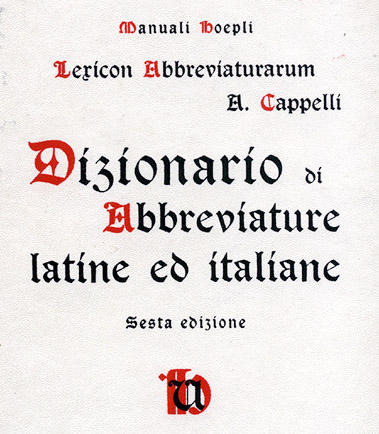The Romans already shortened first names, dates in calendars, and numerous concepts in the state and legal systems. The partially variable and ambiguous abbreviations contain considerable uncertainties regarding the wording. As a result, the use of notae iuris was prohibited for official copies of the Codex Theodosianus. Emperor Justinian declared further prohibitions for law books.
Even in the Middle Ages there was no uniform system of abbreviations. The abbreviation symbols were diverse and regionally different. For reading handwritten texts it is therefore essential to know the most important methods and most frequent forms of abbreviations.
The abbreviations conventions developed in Roman antiquity serve as a model for the practice of shortening in the Middle Ages.
The most common reference work for Latin shortening is the Cappelli. In German texts, abbreviations are not so numerous and are much easier to resolve.













